UNESCO status waterworks in Augsburg - and an Olympic race track, on water!
Along with more Rococo Churches to gawk at.
Today, we wake up a little later than expected, and we were originally going to skip the Historisches Wasserwerk am Hochablass in Augsburg, which was closed last night. And yes, we just found out about it last night when walking the main square. It’s not exactly a tier 1 attraction.
Since I love all things water engineering—from aqueducts to fountains to sewerage (see our Japan post on manholes and the sewerage museum!)—I’m thrilled that Papa Bear says “hey we’re late enough that it’s open, why don’t we stop by?”
It’s a UNESCO World Heritage Site!
Yeah, I didn’t know that could apply to a water system either.
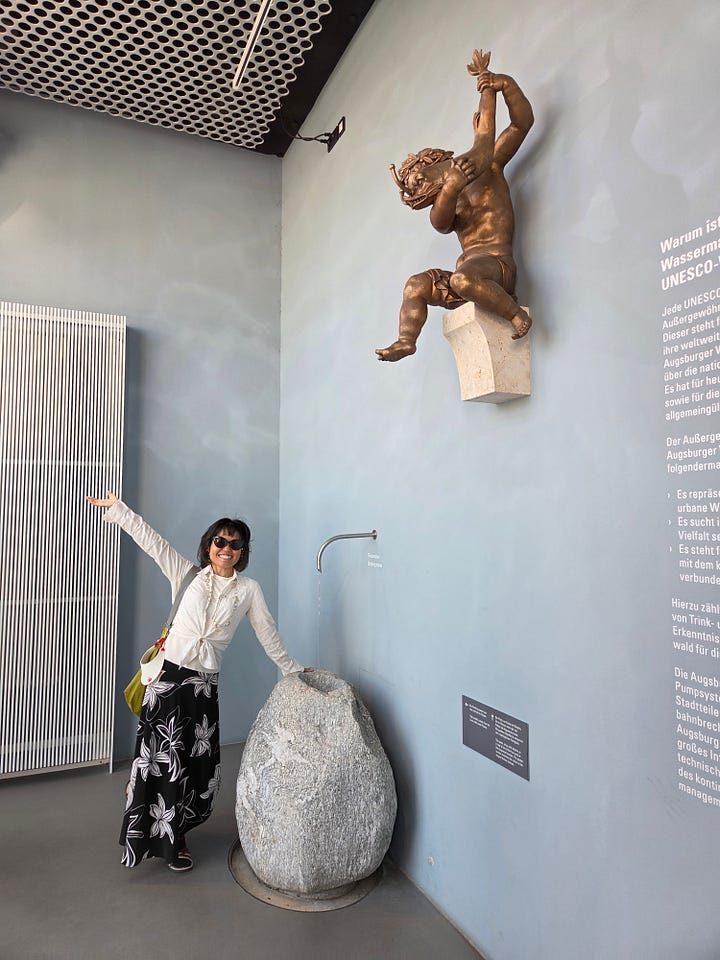

Apparently, Augsburg’s system is over 800 years old. They began separating clean spring water from wastewater as early as the 13th century, diverting water through canals, turning old watchtowers into water towers, and building a public infrastructure that was way ahead of its time. At one point, they even pioneered a system to separate industrial from drinking water. Engineers were clearly running the city.
There are 22 parts to the system, and Augsburg is very proud of each one. We learn all this from our museum guide—a lively woman from Chicago who moved here after her Fulbright fellowship!
There’s even a tap in the museum running untreated spring water, straight from the source. That’s all the water in Augsburg, straight from the source! The locals claim it’s the best water in Germany. I’m a bit of a water connoisseur. My favorite spring water is Topo Chico. And the tap spring water here is very tasty too.
I buy a €16 towel as a souvenir (and I almost never buy souvenirs). That’s how you know I’m impressed.
Before saying good bye to Augsburg, we swing by the Rathaus (City Hall). It’s closed for renovations, but they’ve kindly placed a replica backdrop outside for the tourists to get their photo op. And yes, we pretend we’re inside the grand guilded hall.
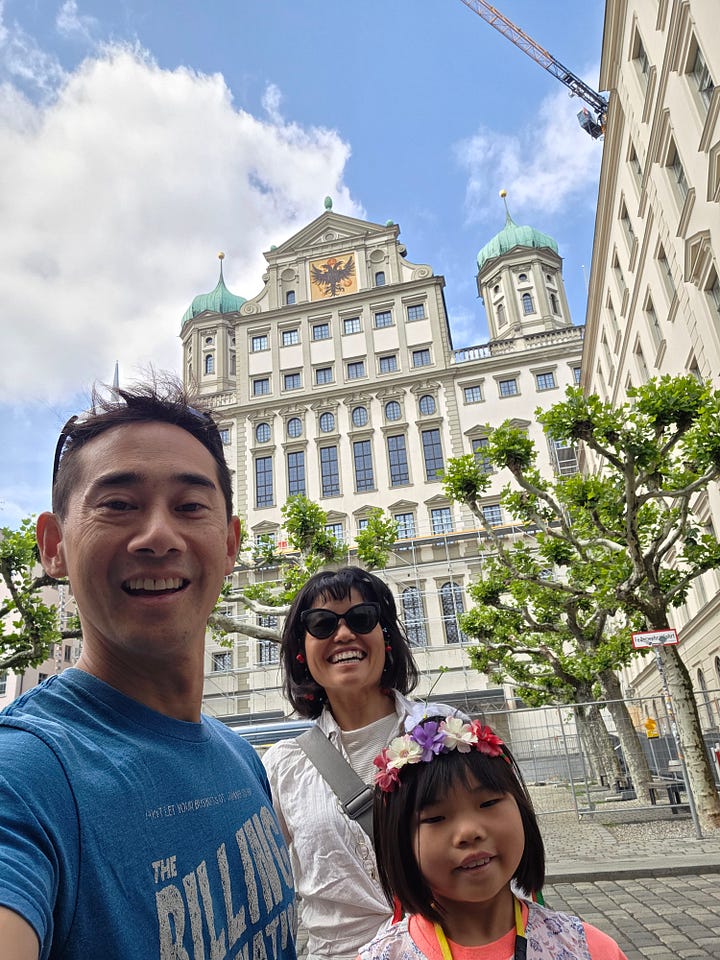
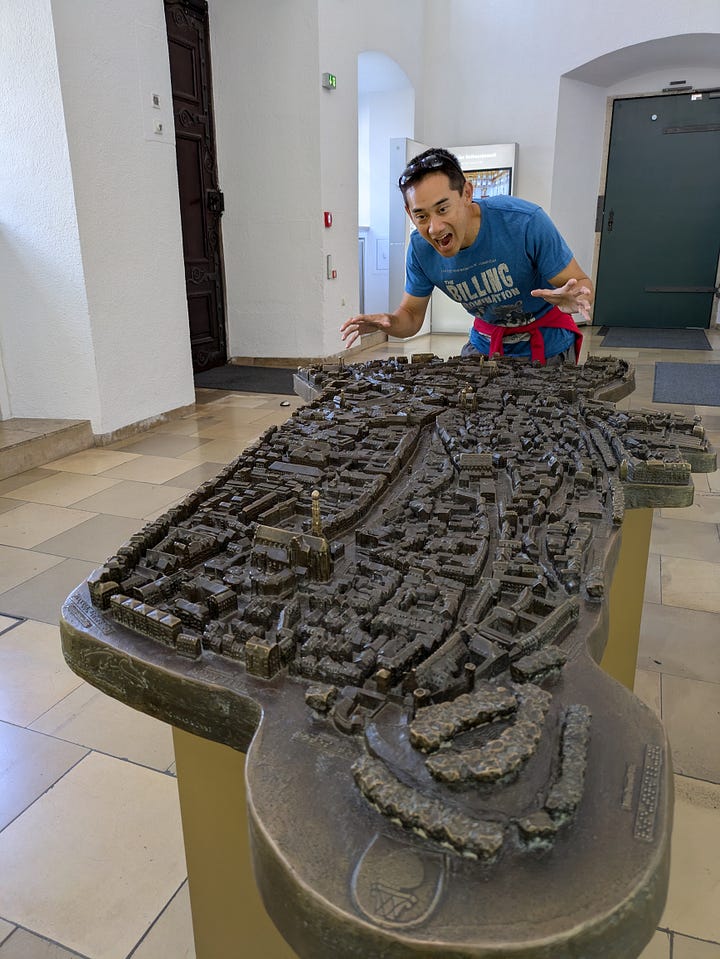
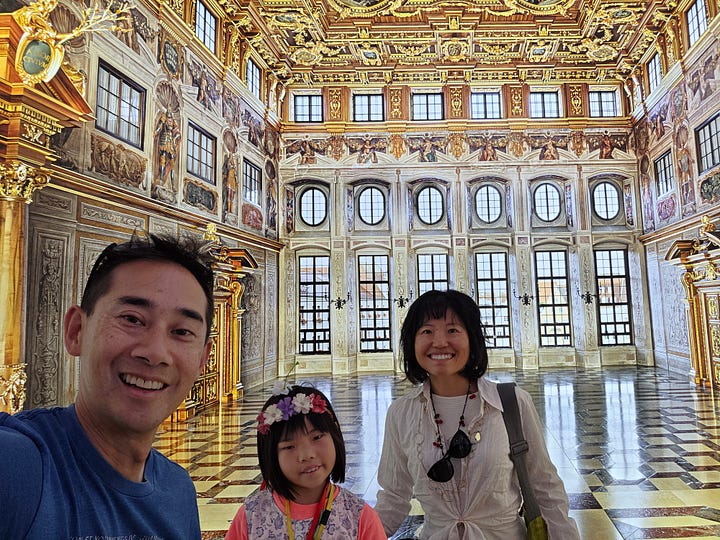
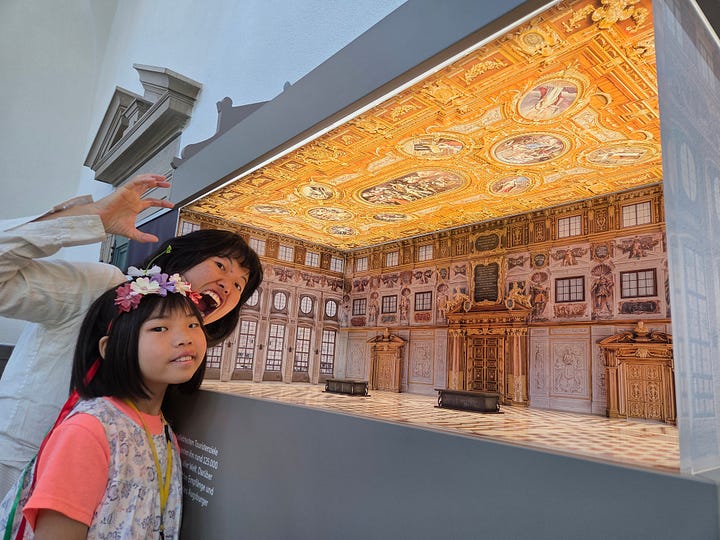
Then a quick stroll through the city’s charming canal-filled lanes before we’re off again.
An Olympic race track, on water!
But the adventure doesn’t end at the museum. One of the coolest things is that you can visit some of the actual working sites, including the legendary Eiskanal, the world’s first artificial whitewater course, built for the 1972 Munich Olympics.
The Eiskanal is used to divert ice during the cold months, so the ice doesn’t jam up their water works. They converted it into a rapid-flow kayak course with adjustable obstacles. Today, it’s still in use for competitions and training!
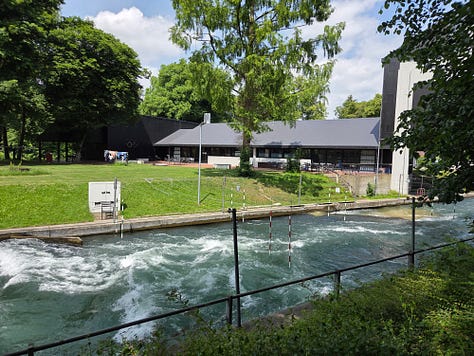


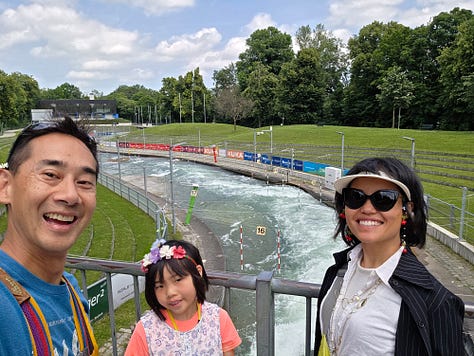
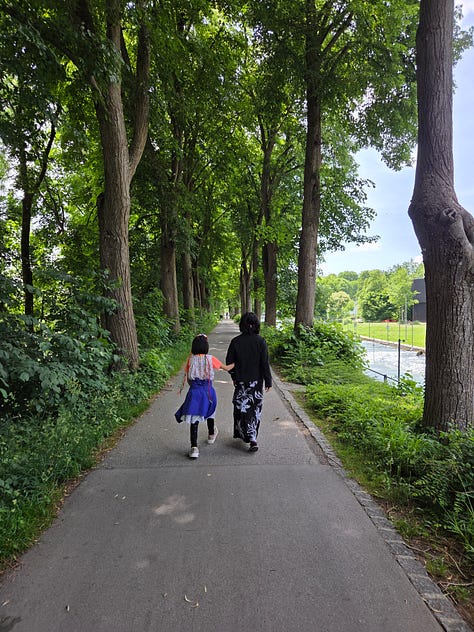
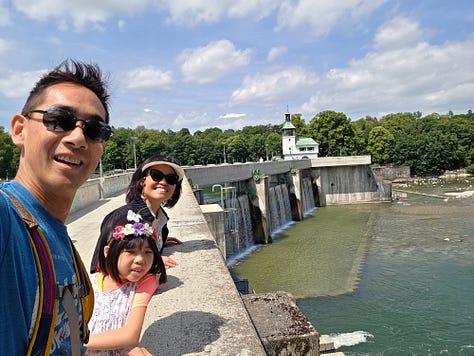
We snack on bread from a bakery in town called Wolf, which—fun coincidence—is also a sponsor of the canal. We munch our bread while watching one kayaker attempt the rapids. He keeps “climbing” back upstream to try and hit the same slalom gates.
Here’s a photo of the Olympic event!
Landsberg am Lech
One hour later, we arrive in Landsberg am Lech, on our way to Füssen and the famous Neuschwanstein Castle. Papa Bear mostly wants to walk along the Lech River—a major river in this region.
German towns love their water features.
Just look at the names:
Rothenburg ob der Tauber (above the Tauber River)
Frankfurt am Main (on the Main River)
Landsberg am Lech (you guessed it—on the Lech)
We’re not expecting much more than a riverside stroll, but I stop in the tourist office and spot a postcard of a stunning church. The woman there tells me, “Oh, there’s a surprise on the ceiling.” Say no more. We hike up the hill.
On the way, we pause at the Bayertor, the town’s 15th-century gate tower—perfect for a photo op.
Then into Heilig-Kreuz-Kirche (Holy Cross Church) we go. And there it is—a magical optical illusion! A painted cross on the ceiling that seems to face you no matter where you stand. Just like the Mona Lisa’s eyes, but way more holy. Papa Bear figures out how it works, and it’s pretty clever.
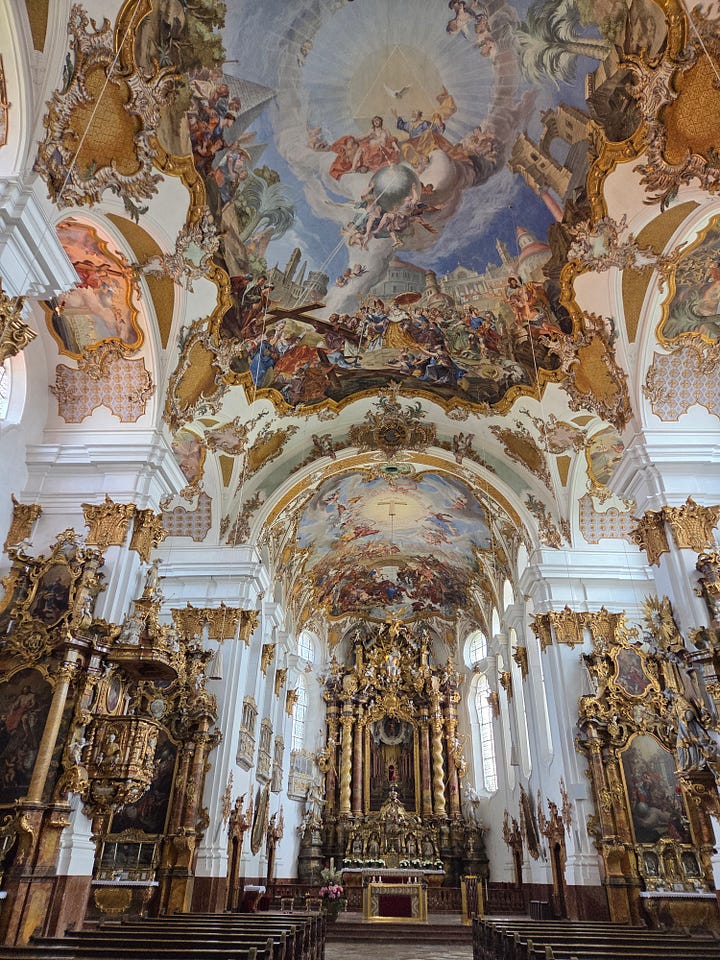
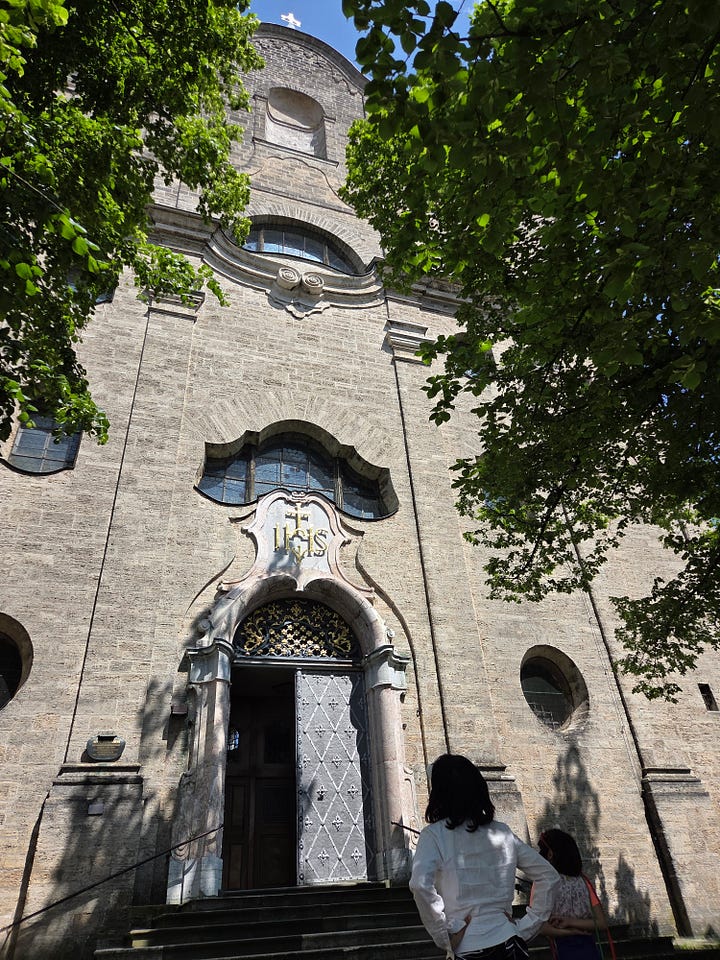
Rococo in a cow field
Next stop: Steingaden.
We visit the Wieskirche (full name: Wallfahrtskirche zum Gegeißelten Heiland auf der Wies), a pilgrimage church literally in the middle of cow fields.
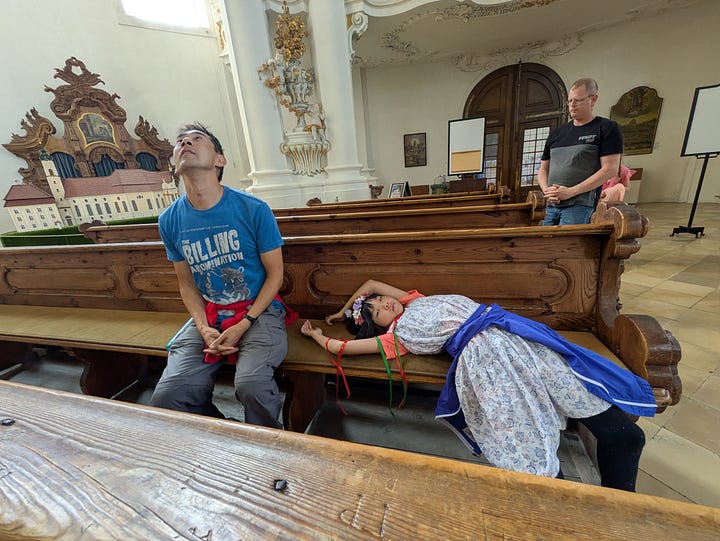

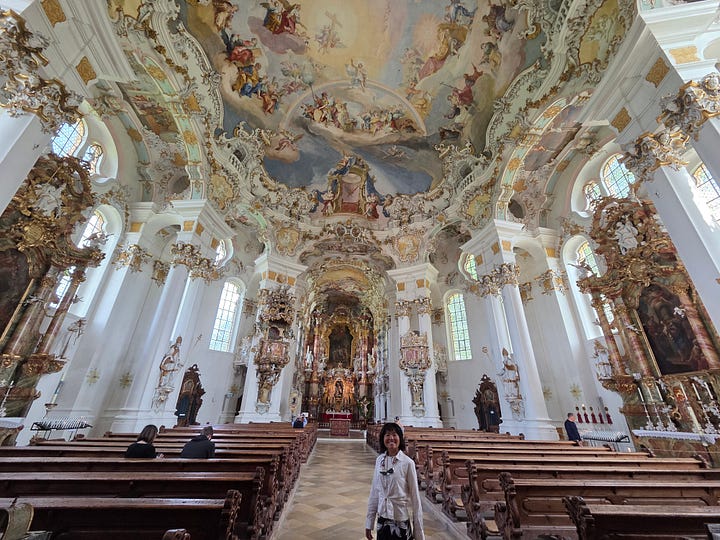

It’s one of the greatest Rococo masterpieces in the world and a UNESCO site. The ceiling is a swirl of angels, clouds, and pastel joy. My kind of heaven.
Ever since my visit to the palace in Potsdam, I’ve had a deep love for Rococo.
First look
We drive on and arrive in Füssen. Our reward?
A first preview of Neuschwanstein Castle—the real-life inspiration for Disney’s Cinderella castle.
I’ve brought a dress and fancy hair-do implements just for this moment. Tomorrow, the photo dreams come true.
Tonight we make a quick stop in Füssen’s old town. The Rathaus is just okay, but the painted apothecary building is charming, and we get our real treasure: a Rewe grocery run. We’re staying in the countryside and need supplies—sausage mix, spätzle, beet herring, and of course, broccoli. Baby Bear confirms: German broccoli is just as good as California’s.
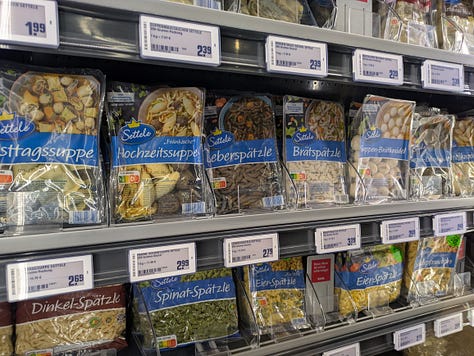


Our apartment has a beautiful balcony with mountain views, and Baby Bear is beaming.




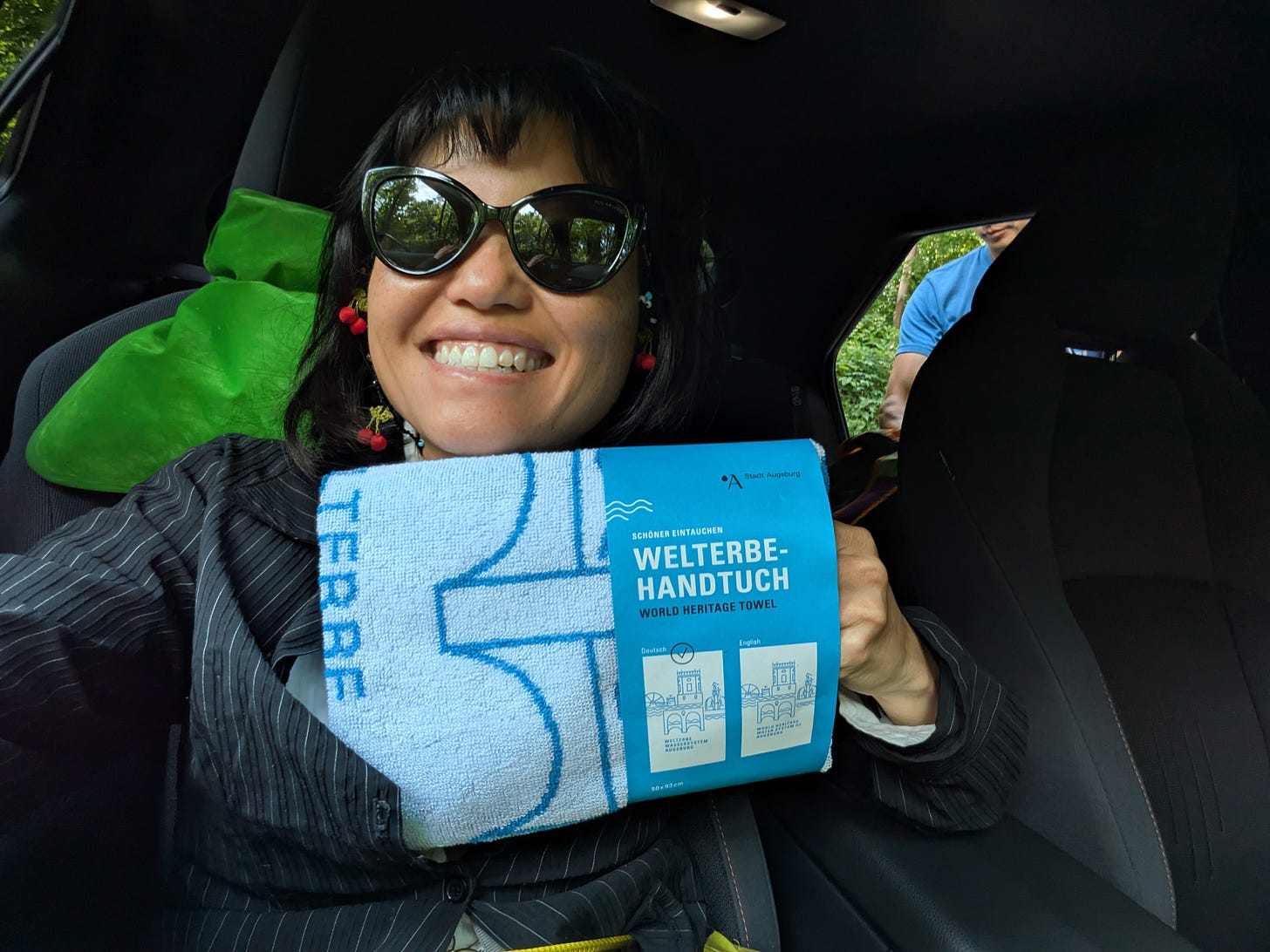


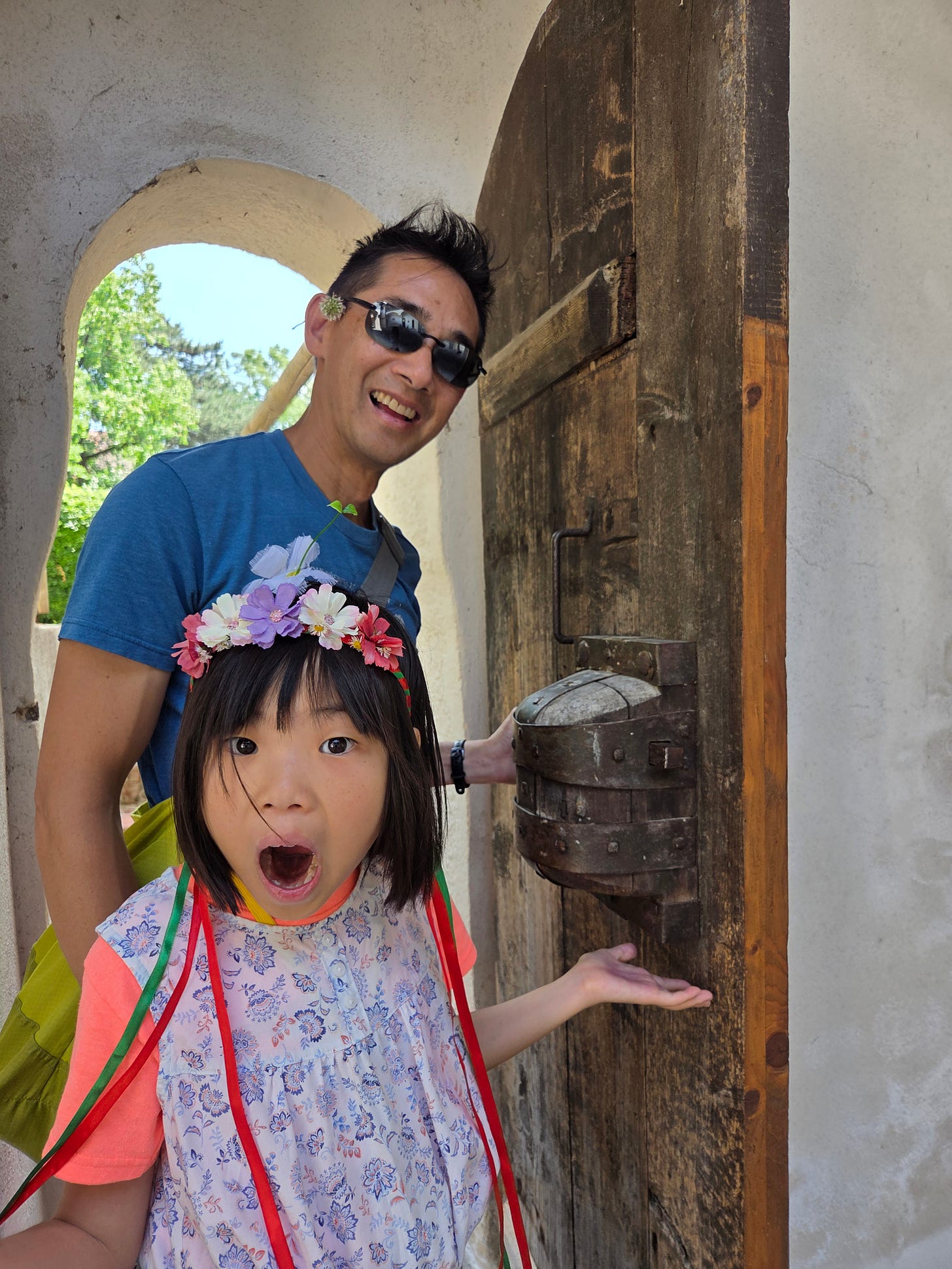


we just arrived in the south near the Black Forest. Your German posts are fun reference points!